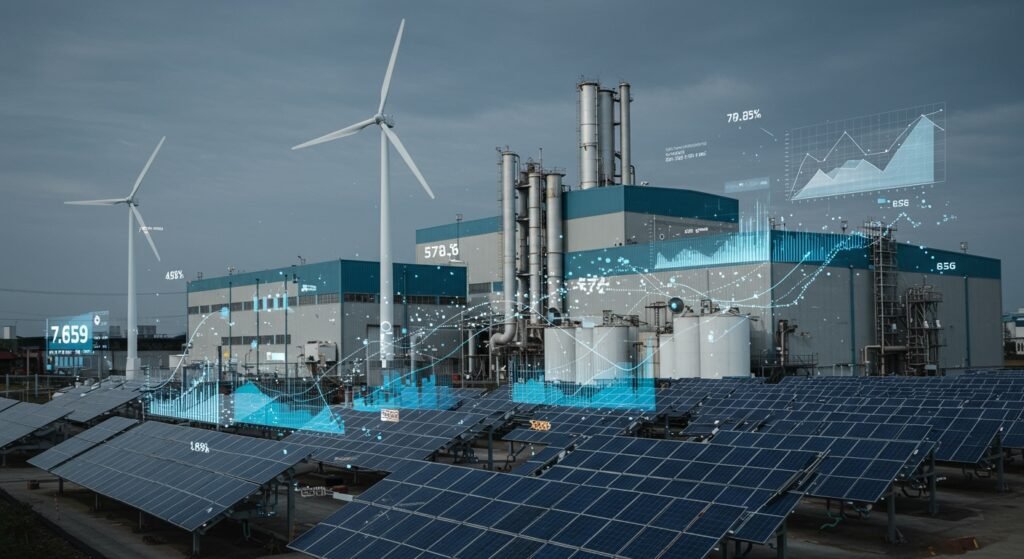In today’s rapidly evolving industrial landscape, the convergence of technological innovation and increasing environmental consciousness has placed a spotlight on sustainable practices. For industrial leaders, navigating this new era requires a strategic approach that transcends traditional operational models. This is where lifecycle engineering emerges as a powerful framework, offering a holistic perspective on product and process management from conception to end-of-life. More than just an engineering discipline, it’s becoming an indispensable tool for achieving robust Environmental, Social, and Governance (ESG) compliance, driving not only sustainability but also long-term profitability and reputation.
Table of Contents
- What is Lifecycle Engineering and Why Does it Matter for ESG?
- 7 Key Strategies for Integrating Lifecycle Engineering with ESG Compliance
- Conclusion: Leading the Charge Towards a Sustainable Future
What is Lifecycle Engineering and Why Does it Matter for ESG?
Lifecycle engineering is an integrated approach that considers all phases of a product or system’s existence, from raw material extraction, manufacturing, distribution, use, maintenance, and eventual disposal or recycling. Its core objective is to optimize performance, minimize environmental impact, and reduce costs throughout the entire lifecycle. For industrial leaders, this framework is critical for addressing the multifaceted demands of ESG compliance, moving beyond superficial greenwashing to genuine, measurable sustainability.
The Environmental Pillar: Minimizing Impact from Cradle to Grave
At its heart, lifecycle engineering directly supports the “E” in ESG by meticulously assessing and reducing environmental footprints. This includes minimizing energy consumption, optimizing material use, reducing waste generation, and evaluating emissions across all stages. By understanding these impacts, companies can make informed design and operational decisions that lead to significantly lower ecological burdens and improved resource efficiency, essential for a circular economy.
Social & Governance Benefits of a Lifecycle Approach
Beyond environmental gains, a comprehensive lifecycle approach also enhances the “S” and “G” aspects of ESG. It promotes responsible sourcing and ethical labor practices throughout the supply chain, fostering better social outcomes. From a governance perspective, the transparency and accountability inherent in lifecycle analysis provide clearer data for reporting, risk management, and strategic decision-making, reinforcing corporate integrity and trust among investors and consumers alike.
7 Key Strategies for Integrating Lifecycle Engineering with ESG Compliance
To truly harness the power of lifecycle engineering for ESG compliance, industrial organizations must adopt a strategic, integrated approach. Here are seven pivotal strategies:
1. Conduct a Comprehensive Lifecycle Assessment (LCA)
An LCA is a systematic analysis of the environmental impacts associated with a product, process, or service throughout its entire lifecycle. This data-driven approach identifies hotspots of resource consumption, waste, and emissions, providing a foundational understanding for targeted improvements. Utilizing ISO 14040 and 14044 standards ensures credibility and comparability of results.
2. Design for Sustainability (DfS)
Integrate sustainability considerations into the earliest stages of product design. DfS principles focus on selecting materials with low environmental impact, designing for durability, reparability, and recyclability, and minimizing energy and resource use during manufacturing and operation. This proactive approach prevents environmental issues before they arise.
3. Optimize Supply Chain Transparency
A product’s lifecycle extends deeply into its supply chain. Industrial leaders must work closely with suppliers to ensure ethical sourcing, fair labor practices, and reduced environmental impact. Transparency, verifiable data, and certifications are crucial. For further insights into global supply chain sustainability, refer to organizations like the UN Global Compact.
4. Implement Robust Data Management and Reporting
Effective ESG compliance hinges on accurate, consistent data. Industrial companies need advanced systems to track material flows, energy consumption, waste generation, and social metrics across their operations and supply chains. This data is vital for generating credible ESG reports and demonstrating compliance to stakeholders.
5. Foster Cross-Functional Collaboration
Lifecycle engineering and ESG compliance are not confined to a single department. Success requires collaboration across R&D, design, manufacturing, procurement, marketing, and finance. Breaking down silos ensures that sustainability objectives are integrated into every aspect of the business. For more on this, explore our insights on Sustainable Business Practices.
6. Embrace Circular Economy Principles
Shift from a linear “take-make-dispose” model to a circular one. This involves designing products for longevity, enabling easy disassembly for repair and reuse, and creating systems for efficient recycling and remanufacturing of components and materials. This minimizes waste and maximizes resource value.
7. Engage Stakeholders and Communicate Progress
Regularly engage with investors, customers, employees, and communities regarding ESG performance and lifecycle initiatives. Transparent communication builds trust, enhances brand reputation, and demonstrates a genuine commitment to sustainability. Highlight achievements and openly address challenges to foster continuous improvement.
Comparative Approaches: Traditional vs. Lifecycle Engineering
Understanding the fundamental shift that lifecycle engineering represents is crucial. Here’s a brief comparison:
| Feature | Traditional Engineering Approach | Lifecycle Engineering Approach |
|---|---|---|
| Focus | Product performance, cost, time-to-market (at production stage) | Holistic optimization across entire product lifecycle (cradle-to-grave/cradle-to-cradle) |
| Environmental Impact | Considered, but often as an afterthought or regulatory hurdle | Integrated into design, material selection, manufacturing, end-of-life planning |
| Cost Management | Primarily direct production costs | Total cost of ownership, including environmental and social costs, end-of-life costs |
| Sustainability Goals | Compliance with minimum standards | Proactive pursuit of resource efficiency, waste reduction, circularity, ESG targets |
| Risk Management | Operational risks, market risks | Includes environmental, social, reputational, and regulatory compliance risks |
Conclusion: Leading the Charge Towards a Sustainable Future
For industrial leaders, adopting lifecycle engineering is no longer optional; it’s a strategic imperative for long-term success and resilience. By embedding a holistic, cradle-to-grave perspective into their operations, businesses can not only meet stringent ESG compliance requirements but also unlock significant opportunities for innovation, cost savings, and enhanced brand value. The path to a truly sustainable industrial future is paved with thoughtful design, transparent operations, and a commitment to understanding the full impact of every product and process. Embrace lifecycle engineering, and lead your industry towards a more responsible and prosperous tomorrow.


